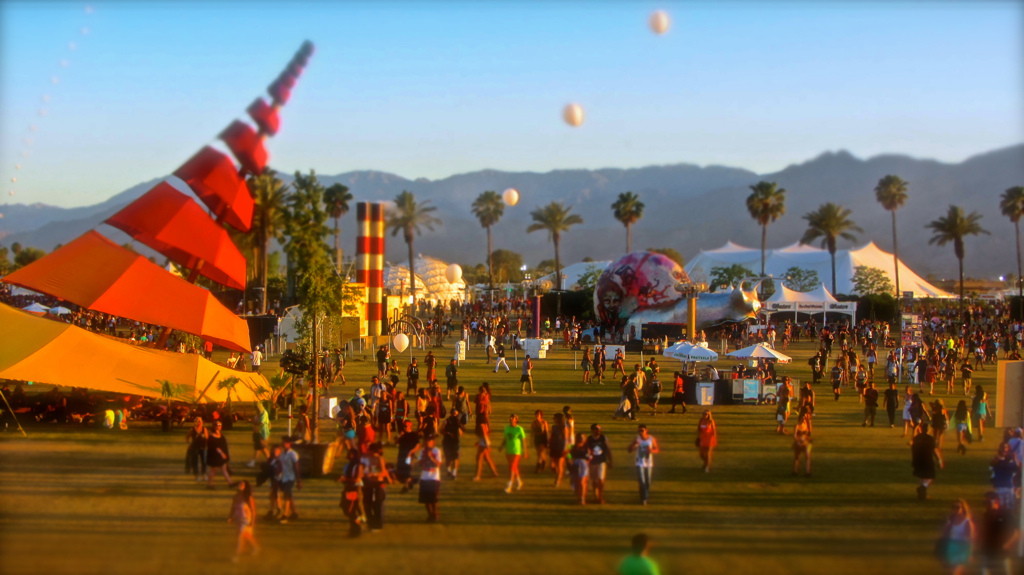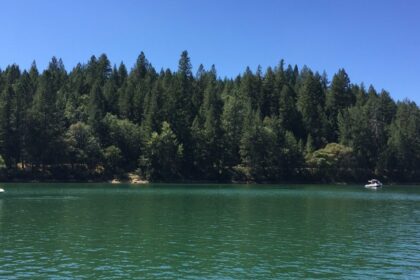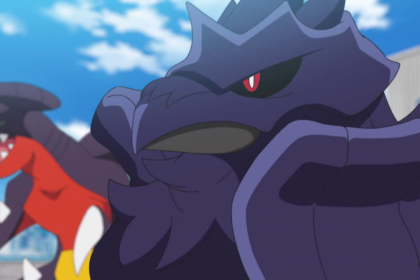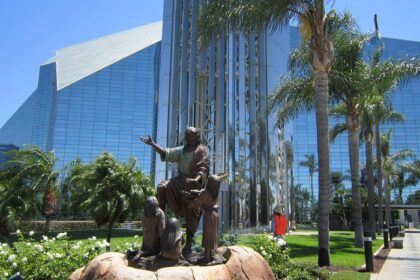Indio (Spanish for “Indian”) is a city in Riverside County, California, United States, in the Coachella Valley of Southern California’s Colorado Desert region. Take a look below for 25 awesome and fun facts about Indio, California, United States.
1. It lies 23 miles (37 km) east of Palm Springs, 75 miles (121 km) east of Riverside, 127 miles (204 km) east of Los Angeles, 148 miles (238 km) northeast of San Diego, and 250 miles (402 km) west of Phoenix.
2. The population was 76,036 in the 2010 United States Census, up from 49,116 at the 2000 census, an increase of 55%.
3. Indio is the most populous city in the Coachella Valley, and was formerly referred to as the Hub of the Valley after a Chamber of Commerce slogan used in the 1970s.
4. It was later nicknamed the City of Festivals, a reference to the numerous cultural events held in the city, most notably the Coachella Valley Music and Arts Festival.
5. Railroad line construction east out of Los Angeles began in 1873. Trains were operated to Colton on July 16, 1875, and to Indio (then Indian Wells) on May 29, 1876. Moving on eastward from Indio, the railroad reached the west bank of the Colorado River opposite Yuma on May 23, 1877 (a village known as Arizona City prior to 1873).
6. There was a delay in getting military authority to lay tracks across the Yuma Indian reservation, and it was September that year before the bridge was completed so trains could operate into Yuma.
7. The Southern Pacific Railroad was to have joined those of the Texas & Pacific, one of several railroads then holding, or seeking, federal authority to build lines from various sections of the country west to the Pacific Coast. But the rail-head of the T & P was at a standstill far off in Texas, so Southern Pacific continued building eastward.
8. The City of Indio came about because of the need for a halfway point for the Southern Pacific Railroad between Yuma, Arizona and Los Angeles, since the engines needed to be refilled with water. At first, the would-be city was called Indian Wells,: 292 but since many other areas already had that name, Indio (after a Spanish variation of the word “Indian”) was chosen instead.
9. After the railroad’s arrival in 1876, Indio really started to grow. The first permanent building was the craftsman-style Southern Pacific Depot station and hotel. Southern Pacific tried to make life as comfortable as it could for their workers to keep them from leaving such a difficult area to live in at the time. It was at the center of all social life in the desert with a fancy dining room and hosting dances on Friday nights.
10. While Indio started as a railroad town, it soon became agricultural. Onions, cotton, grapes, citrus and dates thrived in the arid climate due to the ingenuity of farmers finding various means of attaining water, first through artesian wells and later through the valley’s branch of the All-American Canal. However, water also was a major problem for Indio and the city was flooded several times until the storm water canals were created throughout the Coachella Valley.
11. Businessmen and women found this last frontier land of the continental United States as an ideal place to start fresh. Dr. Harry Smiley and his wife Nell were early residents and stayed in Indio after their car broke down on the way to Los Angeles and became people of influence and helped shape the area.
12. A. G. Tingman was an early store owner and first Postmaster of Indio, but also well known for taking advantage of miners as they headed to the mountains, selling at rather high prices. Later Dr. June Robertson McCarroll became a leading philanthropist and successful doctor in Indio.
13. She was responsible along with the Indio Woman’s Club for pressuring California into adopting the placing of white lines down the streets after she was nearly hit one too many times by passing vehicles.
14. Even though these early founders of the city are considered pioneers, they still partook in the lifestyles of their friends living in such areas as Los Angeles. Indio established itself quickly and kept up with the trends as they were brought in by the railroads.
15. By the turn of the 20th century, Indio was already more than a fading railroad town. Schools were built, the La Casita hospital provided medical services, and families established roots.
16. By 1920, about one to two thousand year-round residents lived in Indio, while it ballooned from 2,500 to 5,000 during the winter months and was advertised as a health resort for senior citizens and those with respiratory diseases and ailments in the rest of the 20th century.
17. Indio also served as the home of the USDA’s Date Station, a place where leading scientific research was taking place on the fruit that would become a major part of the culture of Indio. The station started in 1907 and was responsible for the ability of local farmers to better understand this unique crop and make the Coachella Valley a leader in American date crops. This also created a tie to the Middle East that led to the theme for the County Fair with the Middle Eastern flair (the now defunct National Date Festival from 1946-2020).
18. Coachella and Thermal soon became larger cities than Indio, but Indio remained the “Hub of the Valley”, as it was called. With the burning of the majority of Thermal and the decline of Coachella, Indio grew again. By 1930, Indio was a thriving area and incorporated. On September 6, 1930, storekeeper Fred Kohler received the first business license in Indio.
19. Indio was also aided by the visiting soldiers from Patton’s training grounds in Chiriaco Summit located 30 miles to the east.
20. In the second half of the 20th century, Indio saw another decline as the valley’s population begin to move west towards newer cities such as Palm Desert. However, there is now a reversal in this trend.
21. From 1984 to 2008, Indio grew many times its previous size. Indio handles unprecedented growth for being a select area of choice for thousands of new residents per year. In 2018, Indio was ranked the 30th fastest-growing city in America and 8th fastest-growing city in California.
22. City leaders and other locals are expanding city public services, including recreation activities, commercial retail centers and industrial complexes.
23. Two major contributions to the local economy are year-round agriculture and tourism, although the majority of tourist activity is seasonal, between October and May.
24. Indio has been one of Southern California’s most important agricultural regions, once responsible for a large percentage of the nation’s date crop; however, increasing residential and recreational development, the date groves are now more limited to the south and southeast of Indio. Even the grove of date palm trees at the Riverside County Fair and national Date Festival grounds have been removed by the county.
25. Travelers from around the world still can stop by Shields Date Gardens, a date grower that maintains a large retail store along State Highway 111. There are citrus groves and vegetable fields surrounding the city limits, but rapid development of new housing tracts and golf courses in the “East Valley” in the 1990s and 2000s has displaced most of the agricultural space.




